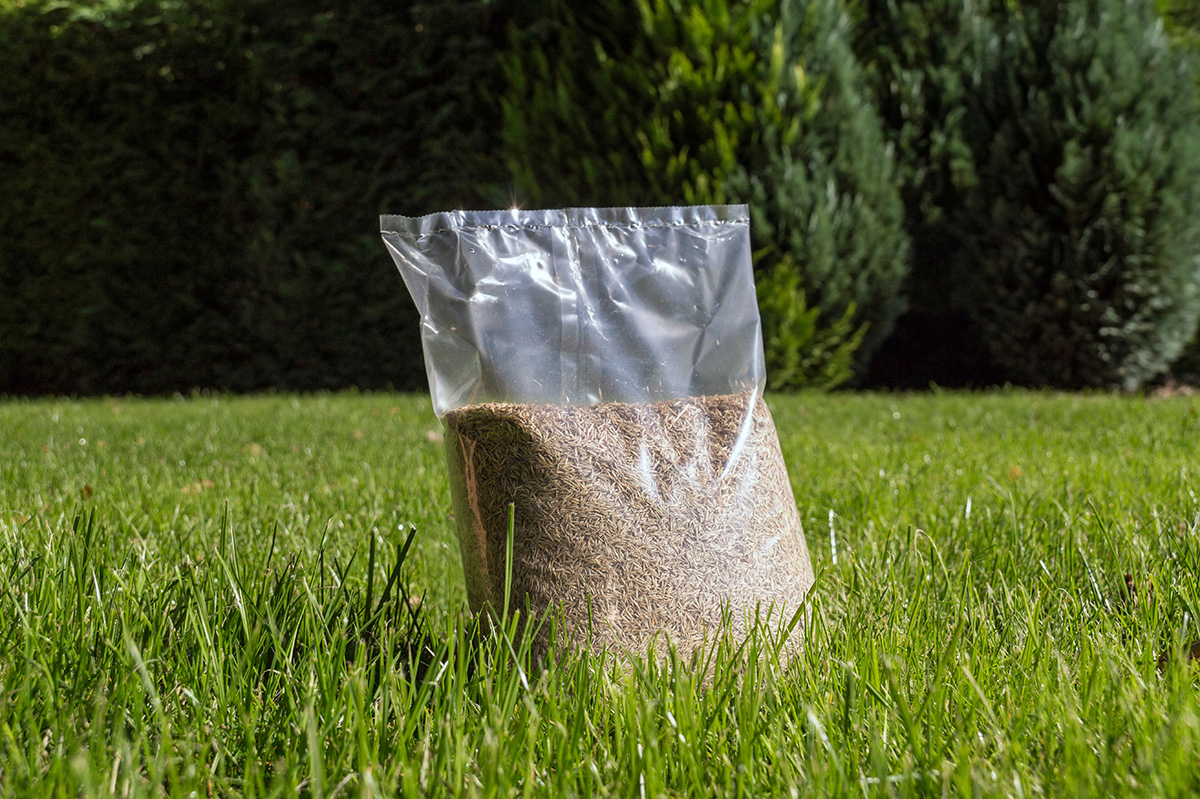Selecting Turfgrass
What is the best lawn grass species? The answer depends on local environmental characteristics, such as amount of shade, type of soil, and climate, and how these interact with the characteristics of the plant. Since grasses vary in their characteristics, select species that are best suited to the specific environmental conditions of your lawn or landscape.
The variation in turfgrasses begins from the distinction between warm-season grasses and cool-season grasses. Most lawns in the upper Midwest region are made up of cool-season grasses that are better adjusted to the relatively cooler climate. These lawns tend to use grass cultivars of species like Kentucky bluegrass, fine fescues, and perennial ryegrass, or a mix of such various cool-season grasses. When planning a new lawn or redoing an old one, it is important to take into consideration which turfgrass or ornamental species are best adapted to regional water availability and the local environment.
Turfgrass Terminology
- A seed mix is a combination of more than one turfgrass species in the same bag (e.g. Kentucky bluegrass mixed with turf-type tall fescue).
- A cultivar is a subset of a species bred for desired characteristics.
- A seed blend contains several cultivars of the same species.
Cultivar and Mix Recommendations
The National Turfgrass Evaluation Program’s evaluation trials provide data about turfgrass cultivars that grow best in the Midwest: https://www.ntep.org/contents2.shtml
Check with your local university extension office for state-specific recommendations of turfgrass species and cultivars.
Illinois
Recommended Grass Cultivars
University of Illinois Extension
Recommended Grass Seed Mixes
University of Illinois Extension
Indiana
Purchasing Quality Grass Seed for your Lawn
Purdue Extension
Michigan
Turfgrass species and cultivar selection
Michigan State Extension
Minnesota
Renovating a lawn for quality and sustainability
University of Minnesota Extension
Ohio
Natural Organic Lawn Care
Ohio State University Extension
Pennsylvania
Turfgrass Species for Pennsylvania
Penn State Extension
Turfgrass Seed and Seed Mixtures
Penn State Extension
Wisconsin
Lawn establishment and renovation
University of Wisconsin Extension

When seeding your lawn, select the grass species that are best suited to your lawn’s conditions. | Photo Credit: Shutterstock
Overseed & Top Dress
Reseeding (a.k.a. overseeding) and top dressing your lawn with compost at least once a year can help maintain dense turf that outcompetes weeds. In general, spot seeding of bare soil patches can be done in mid-April, while fall is the best time to reseed a whole lawn with cool-season grasses. Follow these steps to ensure your turfgrass is dense and weed-free.
- Mow the area to approximately 1.5 inches.
- Aerate to increase seed-to-soil contact.
- Fertilize or top dress with 1/4 to 1/2 inch compost.
- Apply seed at the recommended rate.
- Lightly tamp or press to ensure seed/soil contact.
- Water newly seeded area lightly and frequently to keep the soil moist for the first two weeks. Once it has become established, you can follow recommendations for water conservation.
Source: Seeding a Turf Area in the Spring

Installing sod is an alternative to seeding, but requires well-prepared soil and intensive maintenance in the first few weeks for success. | Photo Credit: Shutterstock
New Sod Establishment
Establishing a new lawn is usually done by seed in the upper Midwest. However, sod can provide both quick and reliable results. For the sod installation process to be successful, the site and soil must be properly prepared. You should consider doing a soil test before installing the sod to determine the condition of the soil and whether it needs any amendments. For instance, compost may be added to a soil lacking adequate organic content. There should be at least six inches of aerated soil for a healthy lawn to grow. It is also important to ensure that perennial weeds are under control and the site has been graded properly.
Once the sod has been put in, the lawn should be watered every day in the morning for about 10-14 days. Use your soil test results to help determine how much fertilizer or other amendments may be needed. It’s important to make sure there is enough phosphorus available to support the critical initial development of roots in the soil. Potassium is important for improving stress tolerance in high traffic areas and during drought conditions. Nitrogen is best applied after the sod has become established in about a month’s time, followed up with another application in 30-60 days. The general target rate for nitrogen fertilizer use is still one pound per 1,000 square feet, even for newly planted sod; however, using less than that amount is recommended for plantings that take place in the summer. Once the lawn is established, you can switch to infrequent watering and twice-yearly fertilizer applications or less, based on your soil testing results.
Download: Seed or Sod?
Shrink Your Lawn
Another consideration when choosing plants for your yard is to think critically about what you want from your landscape. For example, will you need a play area for kids or pets? Do you want an attractive border? Once these decisions are made, you can design and maintain your landscape based on how it will be used. Reducing unnecessary lawn area will help to cut down on maintenance expenses. If you do decide to shrink your lawn, this opens up an opportunity to replace turfgrass with native plants and build a backyard habitat that will support a healthier ecosystem.
ADDITIONAL RESOURCES
Right Plant, Right Place: Selecting Turfgrass for Homeowners
Beyond Bluegrass Brochure








